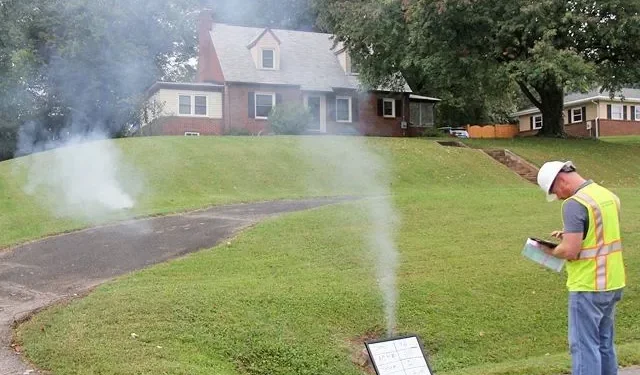Last Updated on October 30, 2024 by Flavia Calina
Introduction to Pipeline Smoke Testing
Pipeline smoke testing is a critical process used by municipalities and utility companies to ensure the integrity of underground piping systems. This method identifies leaks and faults in pipelines, helping prevent environmental damage and costly repairs. This article will delve into the fundamentals of pipeline smoke testing, its benefits, and its role in infrastructure maintenance. One of the critical techniques used is the sewer smoke test, renowned for its efficacy in detecting problematic pipeline areas. Conducting these tests regularly can significantly reduce the risk of unexpected pipeline failures, thereby enhancing the reliability of the infrastructure.
How Pipeline Smoke Testing Works
The pipeline smoke testing technique uses specialized equipment to introduce non-toxic, visible smoke into the pipeline system. The smoke is generated by burning mineral oil, which is forced into the pipeline under low pressure. The smoke will emerge at any leakage point, making it easy to spot faults in the system. This process is effective, environmentally friendly, and safe for adjacent properties as the smoke is harmless and dissipates quickly in the air. Moreover, it provides rapid results, allowing for quick identification and resolution of issues. The visible nature of the smoke aids technicians in conducting a thorough inspection, ensuring no leakage points are overlooked.
Benefits of Pipeline Smoke Testing
- Early Detection: One of the primary benefits of this testing method is the early detection of leaks. Early detection can prevent severe damage and reduce repair costs significantly. For instance, a small, undetected leak can become a significant issue become a significant issue. By catching these leaks early, municipalities can avoid more extensive and expensive repairs later.
- Environmental Protection: By identifying leaks early, pipeline smoke testing helps prevent contaminants from seeping into the ground and water supply, thereby protecting the environment. Leaks in sewer lines can lead to the contamination of drinking water sources, posing a significant health risk. Early detection through smoke testing can prevent such scenarios.
- Cost-Effective: Early detection and timely repairs can save municipalities and utility companies considerable money. Investing in regular pipeline smoke testing can reduce emergency repair costs and extend the lifespan of the pipeline infrastructure. Furthermore, it minimizes disruptions to public services and reduces liability risks associated with pipeline failures.
Pipeline Smoke Testing in Action
Imagine a large urban city experiencing frequent sinkholes due to undetected leaks in its underground piping system. By implementing regular pipeline smoke testing, the city can identify and repair these leaks before they become more severe, thus ensuring public safety and infrastructure integrity.
Choosing the Right Equipment for Pipeline Smoke Testing
Selecting the appropriate equipment is crucial for effective smoke testing. Industry experts recommend using advanced smoke testers that provide reliable and accurate results. Proper equipment not only ensures effectiveness but also enhances the safety of the testing process. Modern smoke testers come with features such as digital controls, safety cut-offs, and remote monitoring capabilities, which make the testing process more efficient and user-friendly. Investing in high-quality equipment can lead to more accurate leak detection and a more streamlined testing process.
Regulatory and Safety Considerations
As with any testing method, adhering to regulatory guidelines and safety standards is essential. Regulatory bodies often provide detailed procedures to ensure testing processes are conducted safely and effectively. Regular training and certification for personnel performing the tests are also recommended. Ensuring compliance with these regulations enhances the safety of the personnel involved and the credibility of the testing results. For instance, certification programs often cover various aspects of smoke testing, including safety protocols, equipment handling, and data interpretation. Adhering to these standards helps maintain the highest level of safety and accuracy in pipeline inspections.
Conclusion
Pipeline smoke testing serves as an invaluable tool in maintaining the reliability and safety of underground piping systems. The method’s ability to detect leaks early, protect the environment, and save costs makes it a preferred choice for municipalities and utility companies. Regularly implementing this testing can lead to more efficient infrastructure management and prevent potential disasters. By prioritizing pipeline smoke testing, cities can ensure the longevity and safety of their underground infrastructure, ultimately leading to better resource allocation and improved quality of life for residents.









